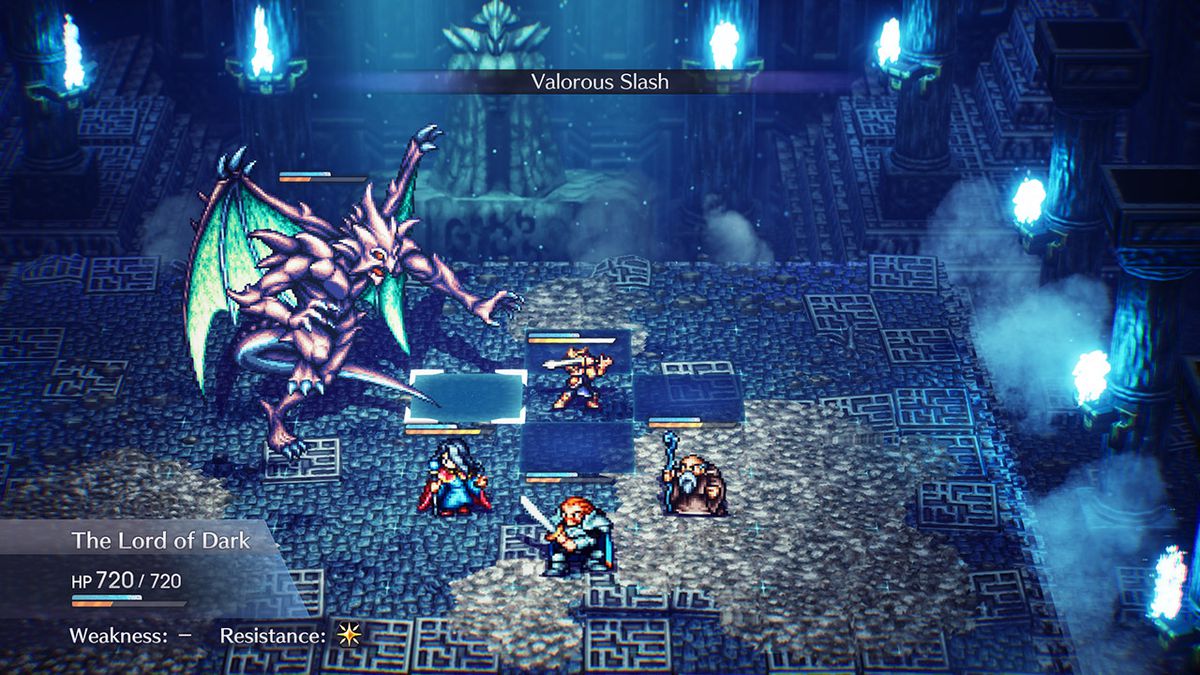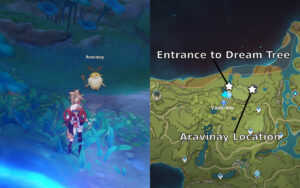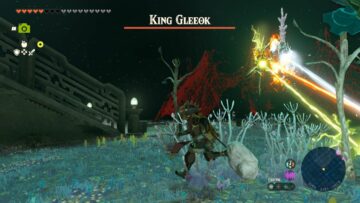When I studied theology in a past life, there was a lot of smoke blown over how society had an “incredulity toward metanarratives.” (Thank you, Jean-François Lyotard). Metanarratives, in which all of history fits into an overarching structure that imbues meaning to its individual parts, weren’t cool anymore, and were met with skepticism.
But if metanarratives are out of vogue, Live A Live didn’t seem to get the memo.
The multi-era, time-bending adventure follows eight characters through their individual epochs, from prehistoric to the distant future. Seven scenarios are immediately available to play from the outset, and their completion unlocks an eighth scenario set in the Middle Ages. After the eighth scenario is completed, the “final chapter” unlocks and integrates all of the characters into one momentous story of humanity’s struggle against an eternal evil.
Image: Square Enix/Nintendo
Released in 1994, the original Live A Live was Takashi Tokita’s second game at Square (now Square Enix) after his work as a lead game designer on Final Fantasy 4 (released as Final Fantasy 2 in the U.S.) and before his work directing Chrono Trigger. So, basically, Live A Live is sandwiched in Tokita’s catalog between two of the greatest games of the ’90s — if not all time. And it reflects that milieu. Creating multiple narrative threads in a video game and then retroactively piecing them all together was ingenious in 1994, and it remains ambitious today. It’s a literary move attempted by a master of his craft.
Walk into any bookstore and you’ll find a binary made by the publishing industry between literary and genre fiction. Literary fiction is sold as character-driven and realistic — and simply labeled “fiction” — while genre fiction is said to be driven by tropes, and sold in categories like sci-fi, mystery, fantasy, or romance. This binary, like most, can’t cleanly describe works of art, and probably shouldn’t exist. But it helps explain where this remake falls short. Live A Live is full of literary ambition, but it relies too heavily on genre tropes.
The literary ambition is only clear at the end of the game, when a lightbulb comes on and all the characters and their scenarios are threaded together as one story. But the impact of that revelation is weakened because the characters haven’t made an impression along the way. There’s a Wild West tale, a kung fu story, a murder mystery in space — and each relies on the archetypes of its respective genre to describe the protagonists, instead of portraying unique people in their own right. Because each scenario before the final chapter takes anywhere from 30 minutes to two hours to complete, you also have very little time to get to know, believe the motivations of, or connect to the individual characters.
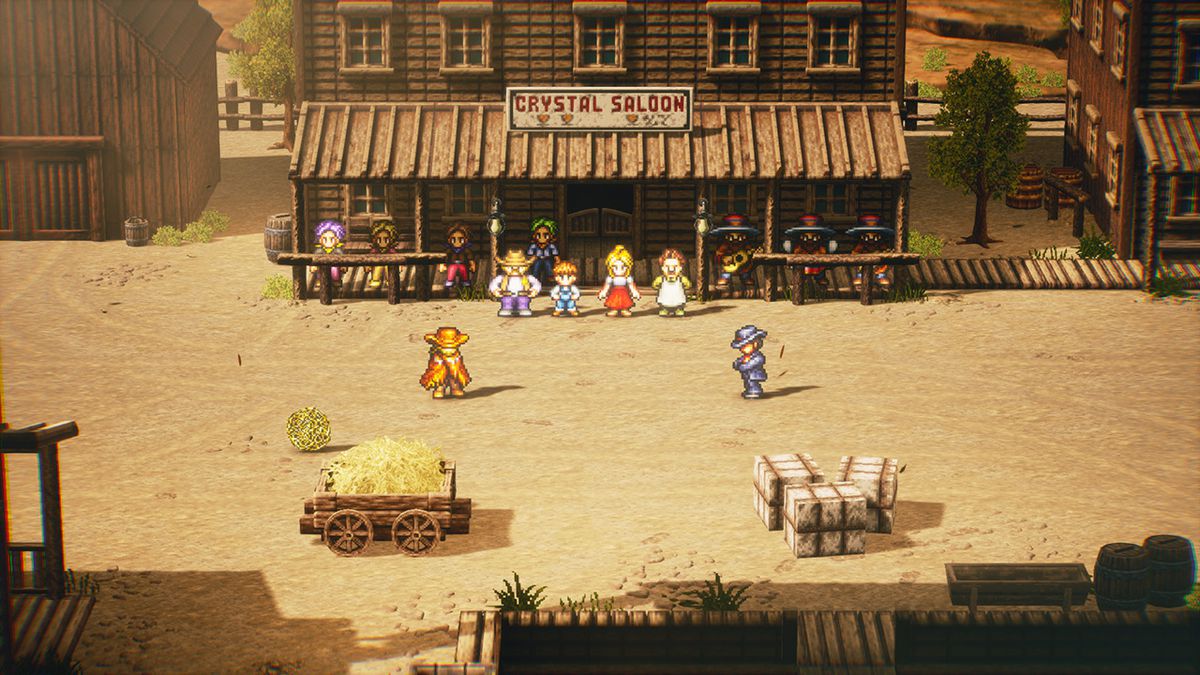
Image: Square Enix/Nintendo
You can play as an irritable outlaw who walks into a town in the American West with a bounty on their head, but you have no idea why. Then, in the style of The Magnificent Seven, you are hired to save the town while inspiring the townspeople to defend themselves, while simultaneously telling them that you’re not a good person. (In this chapter, you also get to hear what Square Enix thinks mariachi music sounds like.)
Or you are a silent shinobi at the end of the Edo period, tasked with sneaking into a palace despite not having finished training. (Your sensei is too essential to some other business that’s never named.) Leaping around between rooftops is cool, but you never learn why you are assassinating the palace’s leader beyond that he is involved in a war. (As a side note: you also free a prisoner who ends up being Sakamoto Ryoma, the real-life imperialist who helped overthrow the shogunate and supported Westernizing Japan. In this retelling, he also has a startling Cockney accent.)
The near-future chapter relies on a rebellious orphan trope, the distant future relies on a rogue AI trope, and the prehistoric scenario relies on a boy-meets-girl trope, where your main motivations are simply hunks of meat and a girl who keeps getting captured by a rival tribe. I will also mention here that out of the 11 playable characters in Live A Live, only one is female.
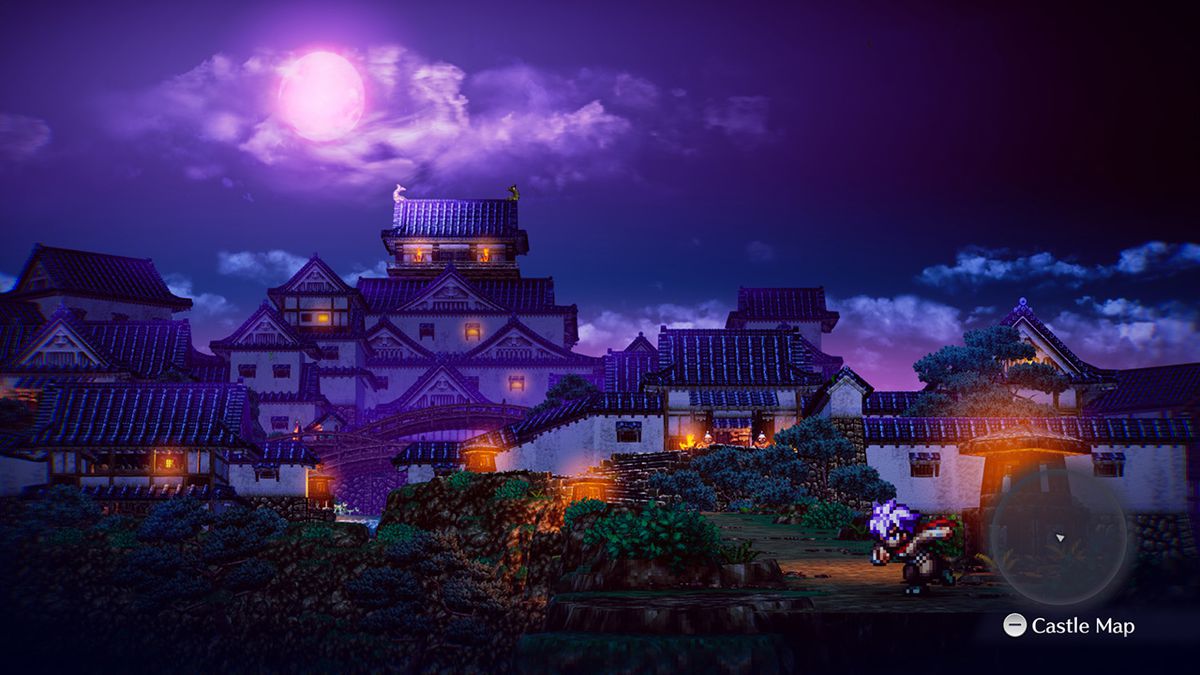
Image: Square Enix/Nintendo
Because the scenarios are simplified into shorter bits — almost like discrete set-pieces — the gameplay fails to get its hooks in for a huge chunk of the game. What’s more, for the first eight chapters, the turn-based battles can often feel like interruptions that don’t serve the overall flow of the game. There is also rarely a thrill in leveling up because the battles are so straightforward. For me, good turn-based fighting feels like a puzzle that demands careful planning to solve. But Live A Live’s battles are often finished in one or two moves with little more consideration than which of my attacks can hit the most enemies at the same time. Until the final marquee encounter of each chapter, combat feels more like an obligation than a boon, and it actively gets in the way of the more compelling mechanics.
In fact, the mechanics that do serve the narrative are methods of avoiding combat. For example, the shinobi can go invisible and sneak through the palace instead of engaging enemies; the prehistoric character can sniff around to discern where nearby opponents lie in wait; the distant future chapter is stronger than others, partly because most of the battles, in a clever twist, are in a completely optional arcade game that actually grows in difficulty. The final chapter does include some exciting boss battles, but after 16-plus hours of robotically clicking through monotonous turn-based combat that never grows in scale, it’s a little late.
Problems with the characters and battles aside, the game still shines with how unique the actual role-playing is. Whereas a game like Persona 5 immerses you in the life of a demon-fighting high schooler, or a game like Skyrim offers you endless paths through a fantasy open world, you play Live A Live as a microcosm of humanity fighting against complete oblivion.
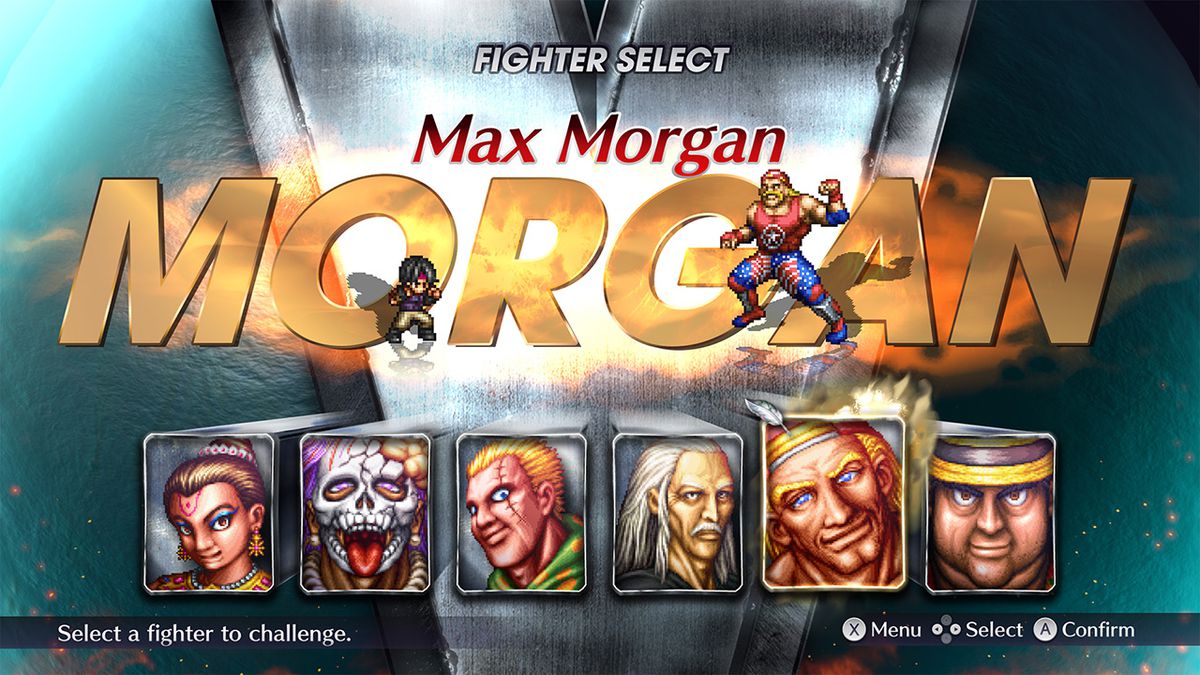
Image: Square Enix/Nintendo
And while many role-playing games have biblical themes and allusions, Live A Live feels biblical in its very DNA. There’s a consistent villain who keeps appearing throughout the various scenarios as the essence of evil. There’s even a self-sacrificing sensei whose work is carried on by his disciple. There’s also a good bit of moralizing about hope.
But most importantly, Live A Live feels biblical in its attempt to tie all of human history into one narrative. But as much as Live A Live admirably tries to tell a story as vast as any game has ever told, time and time again, its characters are too flimsy to hold the weight.
Live A Live will be released on July 22 on Nintendo Switch. The game was reviewed on Switch using a pre-release download code provided by Nintendo. Vox Media has affiliate partnerships. These do not influence editorial content, though Vox Media may earn commissions for products purchased via affiliate links. You can find additional information about Polygon’s ethics policy here.
